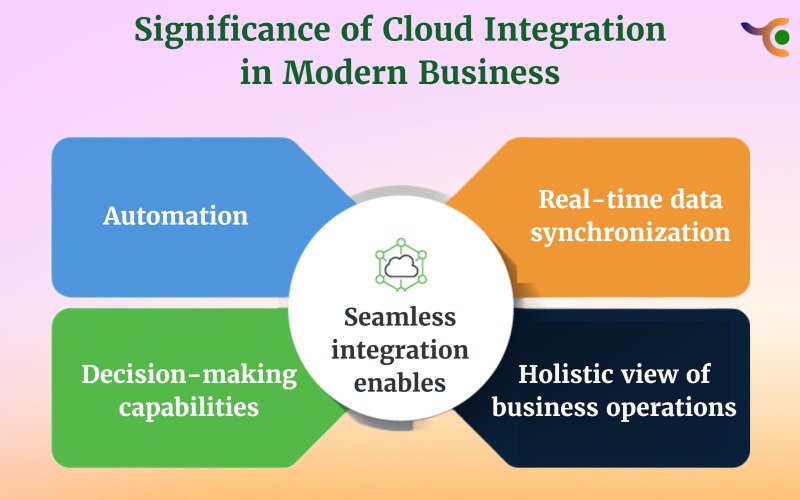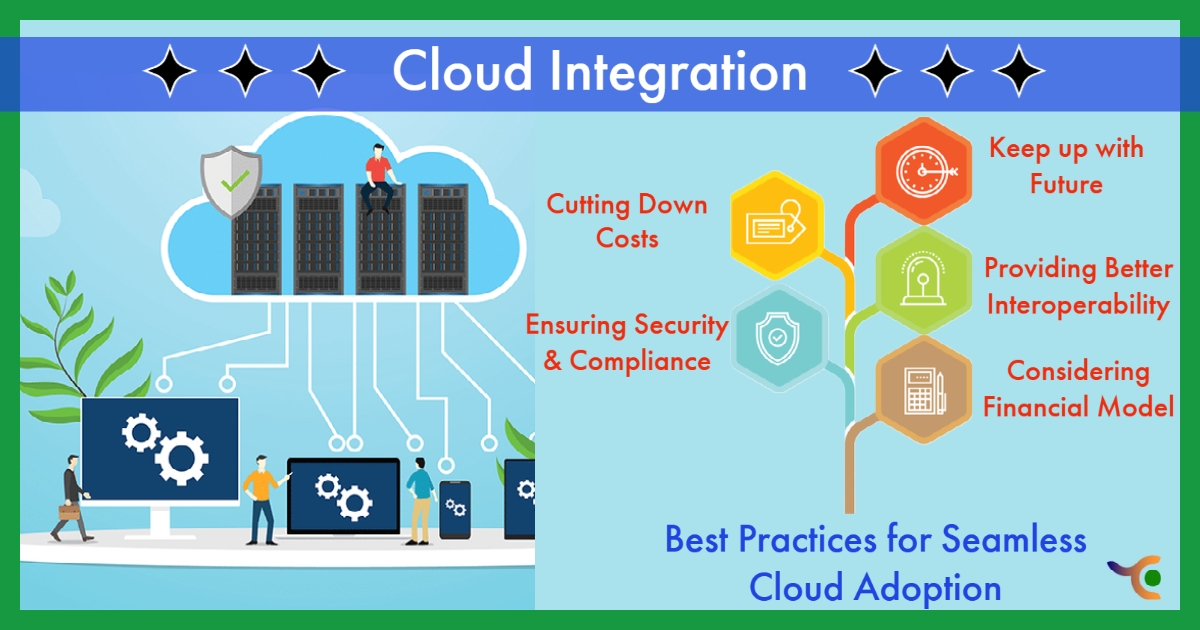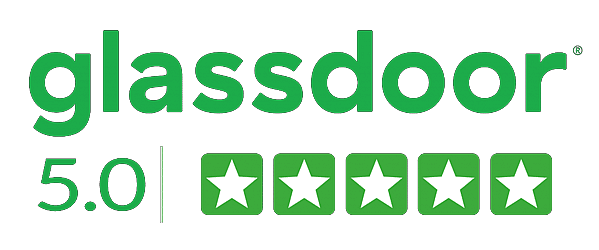Cloud adoption has become a crucial aspect of modern business environments, enabling organizations to enhance their agility, scalability, and operational efficiency. However, the process of integrating various systems and applications with the cloud can be complex and challenging. In this blog, we will explore how MuleSoft, a leading integration platform, facilitates seamless cloud integration. We will delve into the significance of cloud integration in today’s business landscape, assess integration needs, design a scalable integration architecture, and discuss data security and compliance considerations.
Overview of MuleSoft and Its Features
MuleSoft is an integration platform that enables organizations to seamlessly link applications, data, and devices together. It provides a unified integration approach by enabling connectivity across various systems and applications, both on-premises and in the cloud. MuleSoft offers a comprehensive set of tools and features, such as API management, data transformation, and workflow automation, to simplify the process and accelerate cloud adoption.
How MuleSoft Facilitates Cloud Integration?
MuleSoft plays a pivotal role in enabling organizations to integrate their existing systems and applications with the cloud effectively. It provides pre-built connectors and templates for popular cloud services, allowing for seamless connectivity and data exchange. MuleSoft’s Anypoint Platform provides a visual interface for designing integration workflows, making it easier for developers and business users to collaborate on integration projects. With MuleSoft, organizations can achieve faster time-to-market, reduced integration complexity, and improved operational efficiency.
The Significance of Cloud Integration in Modern Business Environments

Understanding the Role of Integration in Cloud Adoption
Integration is the backbone of successful cloud adoption. It allows organizations to connect disparate systems, applications, and data sources, ensuring smooth information flow between on-premises and cloud environments. Seamless integration enables real-time data synchronization, enables process automation, and provides a holistic view of business operations, enhancing decision-making capabilities.
Key Challenges Organizations Face During Cloud Adoption
While cloud adoption offers numerous benefits, organizations often encounter challenges during the integration process. These challenges include legacy system compatibility issues, data migration complexities, security concerns, and maintaining regulatory compliance. Overcoming these challenges requires careful assessment of integration needs and the implementation of best practices.
Assessing Integration Needs for Seamless Cloud Adoption
Identifying Existing Systems and Applications
Before embarking on cloud integration, it is essential to identify and understand the existing systems and applications within an organization. This assessment helps determine the scope of integration and potential challenges that may arise during the process. By analyzing the dependencies and interconnections between different systems, organizations can develop an integration strategy that ensures seamless cloud adoption.
Evaluating Integration Requirements for Cloud Adoption
After identifying existing systems and applications, organizations should evaluate the integration requirements for cloud adoption. This evaluation involves understanding data formats, communication protocols, security measures, and performance expectations. By conducting a thorough evaluation, organizations can design an integration architecture that meets their specific needs and supports future scalability.
Designing a Scalable Cloud Integration Architecture
Building a Strong Foundation with APIs
Application Programming Interfaces (APIs) play a crucial role in building a scalable cloud architecture. APIs serve as the intermediary between diverse systems, enabling them to securely communicate and exchange data. Organizations should focus on creating well-documented and reusable APIs that encapsulate core business logic. Moreover, this approach enhances flexibility, promotes reusability, and simplifies the integration process.
Implementing Hybrid Integration Approaches
The hybrid approaches combine on-premises and cloud capabilities, enabling organizations to leverage the strengths of both environments. By adopting a hybrid strategy, organizations can gradually migrate their systems and applications to the cloud while maintaining connectivity with on-premises assets. This approach provides a smooth transition and minimizes disruption to business operations.
Ensuring Data Security and Compliance in Cloud Integration
Cloud Security Considerations for Integration
Data security is of paramount importance when integrating with the cloud. Organizations should implement robust security measures such as encryption, authentication, and access controls to protect sensitive information during transit and at rest. It is essential to choose a cloud provider with stringent security protocols and compliance certifications to ensure data integrity and mitigate potential risks.
Implementing Data Governance and Privacy Measures
Compliance with data governance and privacy regulations is vital during integration. Organizations must define data ownership, establish data governance policies, and ensure adherence to relevant regulations such as GDPR or HIPAA. Additionally, implementing data anonymization, pseudonymization, and consent management mechanisms helps protect customer privacy and maintain regulatory compliance.:
Conclusion
Recap of the Benefits of MuleSoft and Cloud Integration
MuleSoft, with its robust features and capabilities, empowers organizations to overcome integration challenges and achieve seamless adoption. By leveraging MuleSoft’s integration platform, organizations can streamline business processes, enhance data accessibility, and improve overall operational efficiency. It enables organizations to capitalize on the benefits of the cloud, such as scalability, cost-efficiency, and agility, while leveraging their existing systems and applications.
Empowering Seamless Cloud Adoption with TCI’s Expertise
At TCI, we understand the complexities involved in cloud integration and the value of leveraging MuleSoft’s capabilities. With our expertise, we help organizations assess their integration needs, design scalable architectures, and ensure data security and compliance. Moreover, our comprehensive approach ensures a seamless transition to the cloud, enabling organizations to unlock the full potential of cloud-based technologies.
In conclusion, MuleSoft and cloud integration are instrumental in modern business environments. By following best practices and leveraging TCI’s expertise, organizations can embrace the cloud with confidence, realizing enhanced operational efficiency, agility, and competitive advantage.


